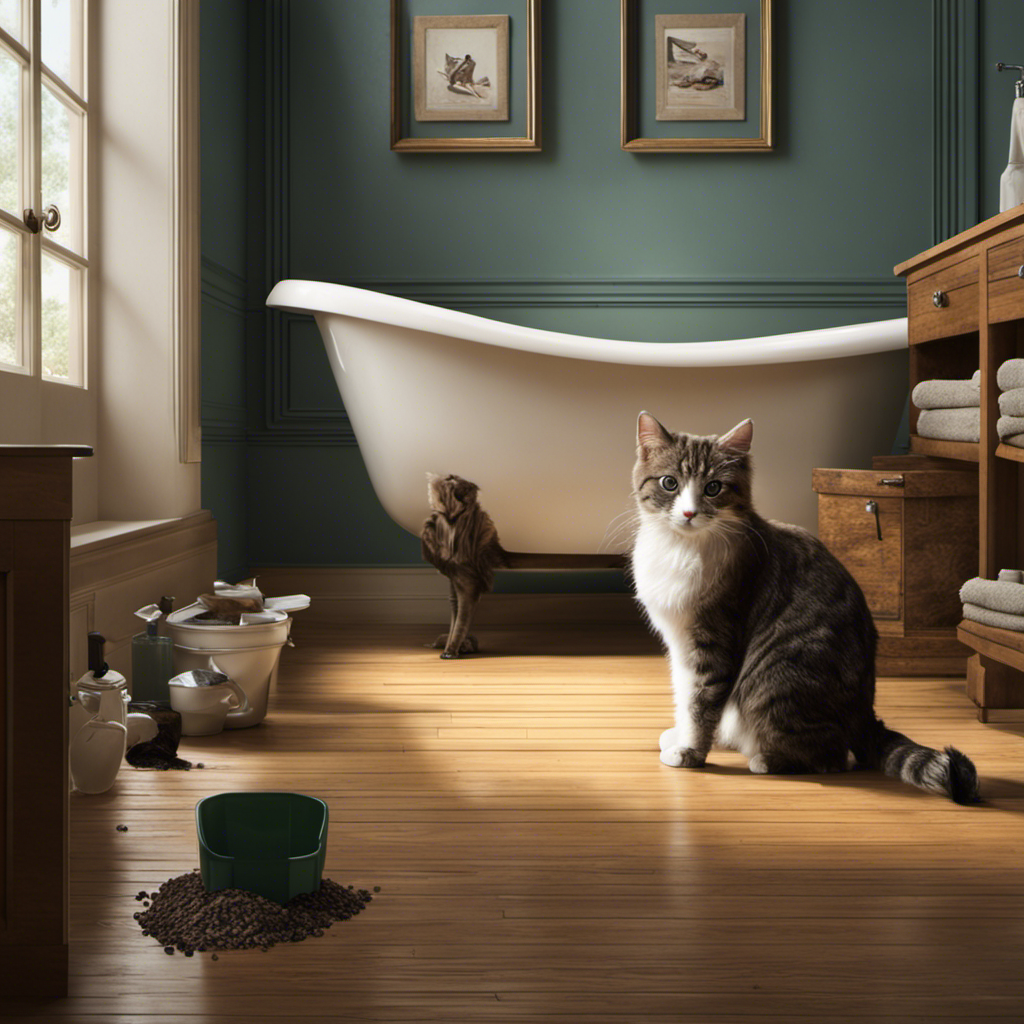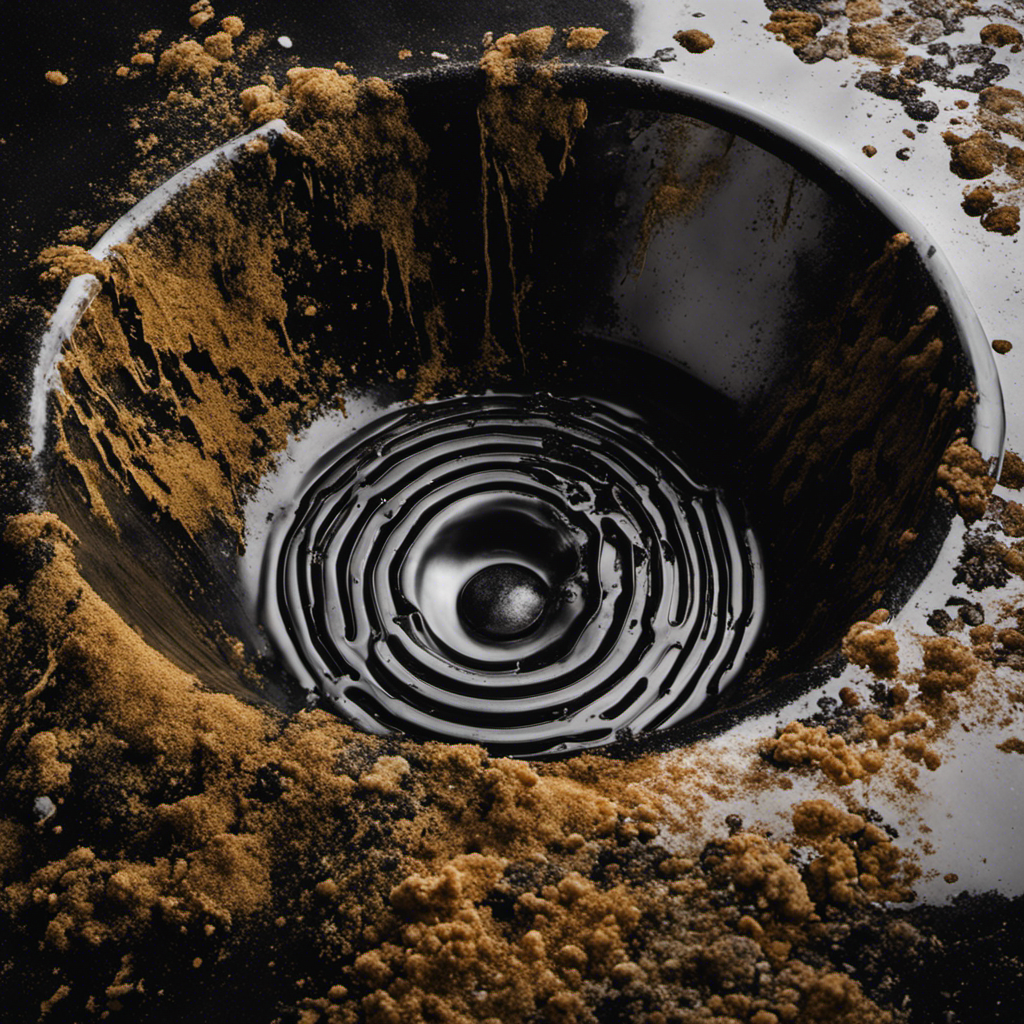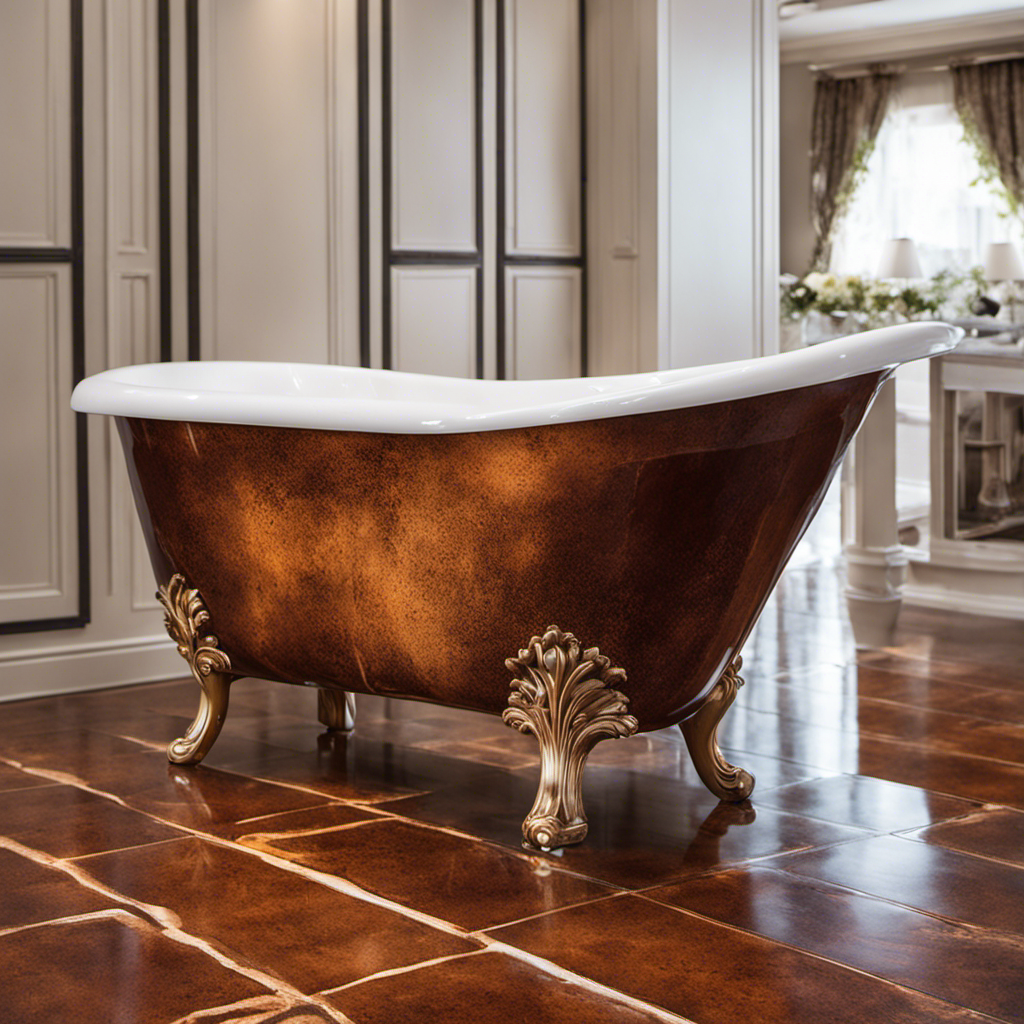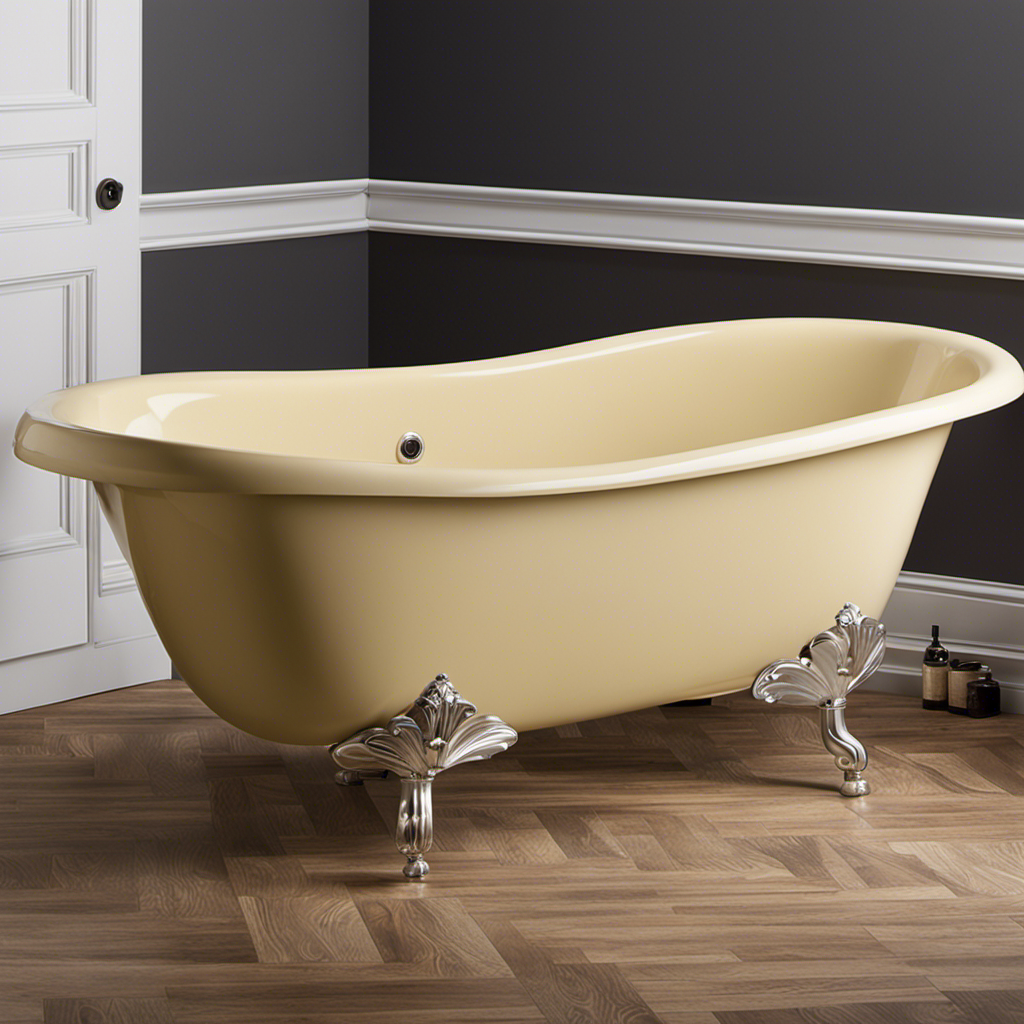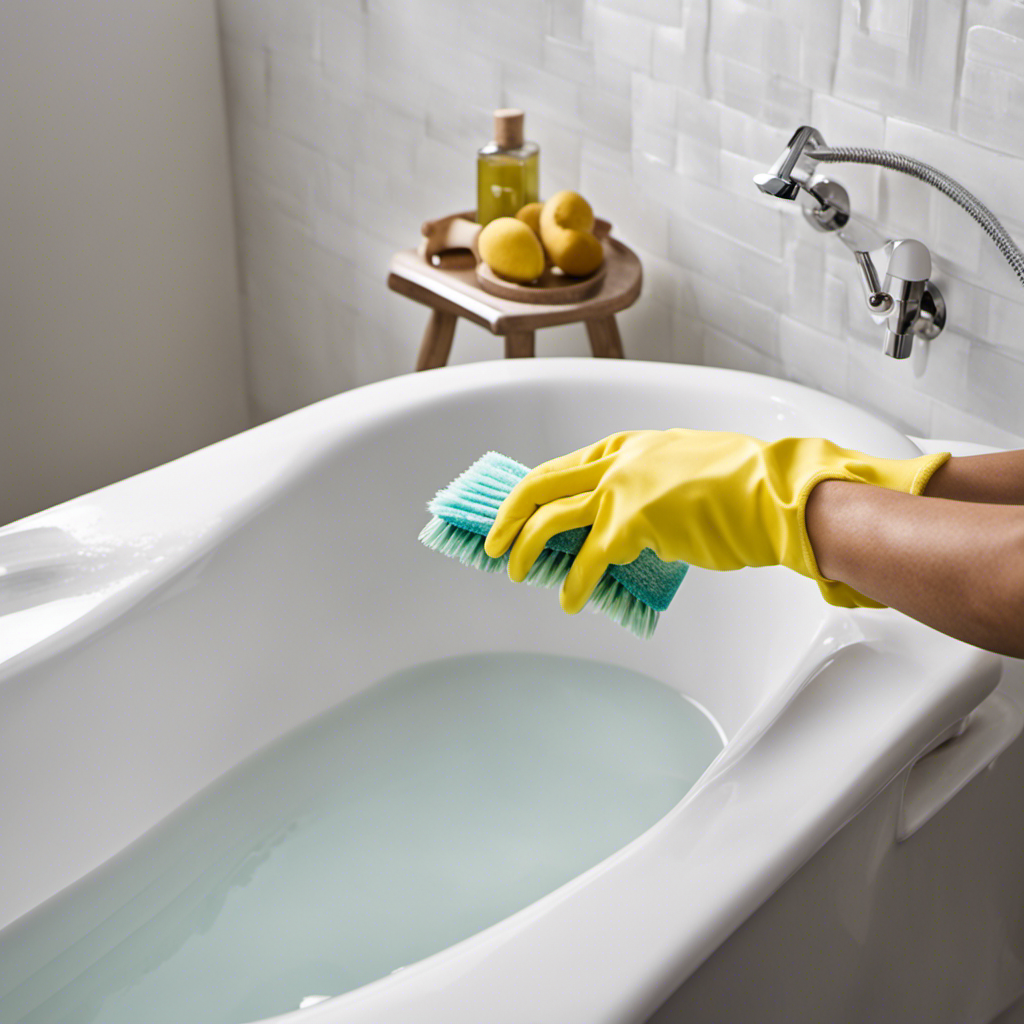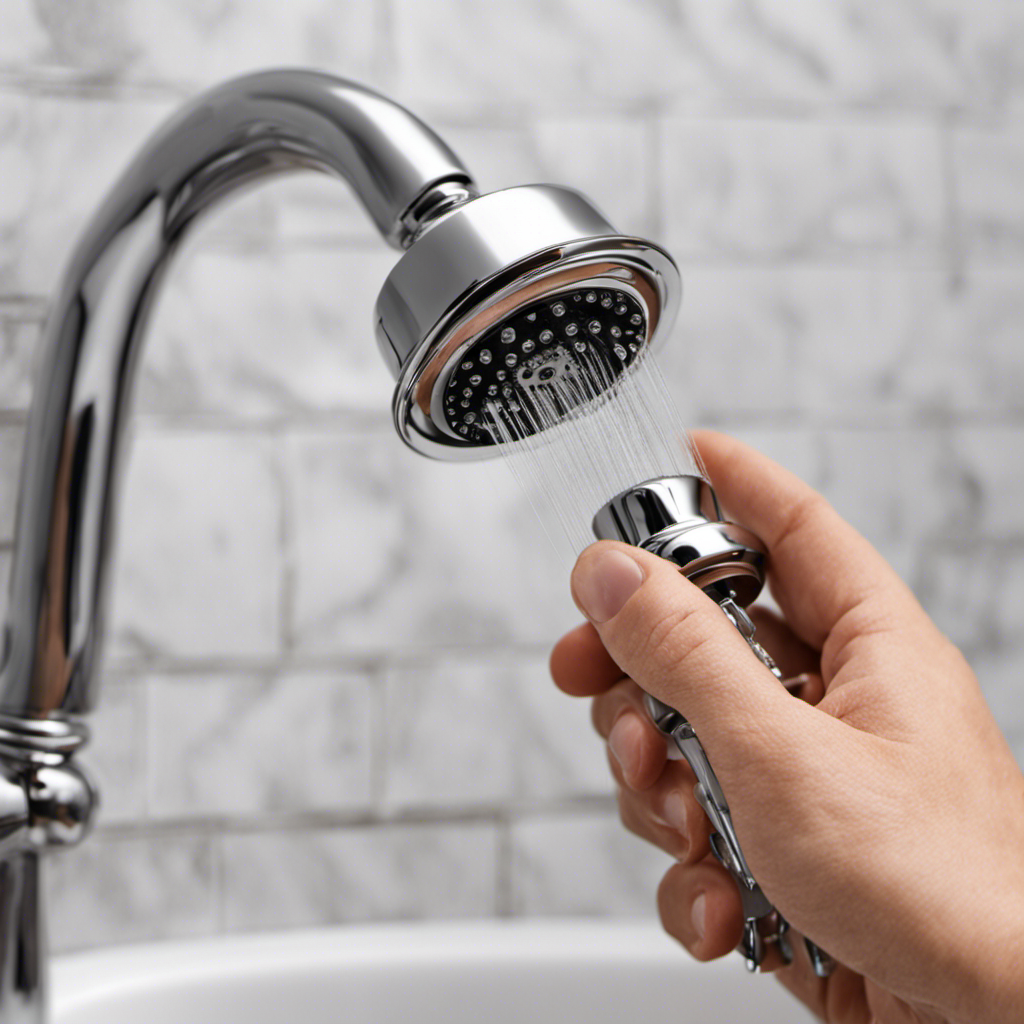Do you ever feel like you’re playing a game of hide and seek with your feline friend? One moment, they’re using the litter box like a champ, and the next, you find their surprise waiting for you in the bathtub.
But fear not, for this article will delve into the mysterious world of why cats choose the tub as their personal potty. From understanding their instincts to addressing environmental factors, we’ll explore effective strategies that will help keep your bathtub poop-free.
Key Takeaways
- Unhappy with litter box
- Preference for litter box alternatives
- Behavioral issues
- Anxiety or stress
Possible Reasons for the Behavior
There are several possible reasons why your cat might be pooping in the bathtub.
One reason could be that your cat is not happy with their litter box. Cats can be very particular about their bathroom habits, and if they don’t like something about their litter box, they may choose to go elsewhere. It’s important to make sure the litter box is clean and in a quiet, private location. Additionally, some cats may prefer litter box alternatives, such as a litter box with high sides or a different type of litter.
Another reason could be behavioral issues. Cats can sometimes develop anxiety or stress, which can lead to inappropriate elimination. Behavioral training techniques, such as providing more playtime, creating a routine, and using positive reinforcement, can help address these issues and encourage your cat to use the litter box properly.
Understanding the Cat’s Instincts
Understanding the cat’s instincts can help explain why it chooses the bathtub as a place to eliminate. Cats have specific behaviors and instincts that influence their choices when it comes to elimination. Here are some key feline instincts that may shed light on this behavior:
-
Territorial marking: Cats mark their territory through scent, and the smooth surface of the bathtub can help them leave a distinct smell that reinforces their claim over the area.
-
Privacy and seclusion: Cats are naturally solitary animals and seek out quiet, secluded spots for elimination. The enclosed nature of a bathtub provides them with the privacy they desire.
-
Texture preference: Some cats have a preference for certain textures when eliminating. The smooth surface of the bathtub may mimic their preferred substrate, such as sand or litter.
-
Easy cleanup: Cats are generally clean animals and prefer easily cleanable areas for elimination. The smooth, non-absorbent surface of the bathtub makes it simpler to clean up after themselves.
-
Strategic positioning: Cats are strategic in their choices, and the bathtub’s location in the house may offer them a vantage point to monitor their surroundings while eliminating.
Environmental Factors That Contribute
One factor that contributes to a cat’s choice of elimination location is the availability of quiet and secluded spots in the environment. Cats are naturally inclined to find a safe and private area to do their business.
When it comes to bathroom hygiene, it is important to consider the placement of the litter box. Make sure to position it in a quiet and low-traffic area of your home, away from loud noises and disturbances. This will help create an environment that is conducive to your cat’s elimination needs.
Additionally, maintaining a clean litter box is crucial for your cat’s health and well-being. Cats are clean animals and prefer a tidy and odor-free litter box. Regularly scooping the litter and completely changing it at least once a week will help ensure good bathroom hygiene for your feline friend.
Taking these factors into consideration can help prevent your cat from seeking alternative elimination spots, such as the bathtub.
Health Issues to Consider
When it comes to your cat’s health, it’s important to be aware of any potential issues that could affect their elimination habits. There are several health issues that could lead to your cat pooping in the bathtub. Here are some things to consider:
- Digestive problems: Cats with gastrointestinal issues may prefer the smooth surface of the bathtub over the litter box.
- Urinary tract infections: Painful urination can cause your cat to associate the litter box with discomfort, leading them to find alternative places to eliminate.
- Arthritis: Older cats with joint pain may find it difficult to climb into the litter box.
- Stress or anxiety: Cats may develop litter box aversion due to changes in their environment or routine.
- Medical conditions: Certain medical conditions, such as kidney disease or diabetes, can cause increased urination and accidents outside the litter box.
Understanding these potential health issues can help you address the underlying cause and find appropriate solutions.
Now, let’s explore effective strategies to prevent this behavior.
Effective Strategies to Prevent the Behavior
To prevent this behavior, it’s important to address the underlying cause and find appropriate solutions. One effective strategy is to provide litter box alternatives that may be more appealing to your cat. This could include trying different types of litter, such as unscented or clumping litter, or using a different style of litter box, such as a covered box or a larger box. Additionally, behavioral training techniques can help redirect your cat’s bathroom habits. Positive reinforcement, such as treats or praise, can be used to reward your cat for using the litter box instead of the bathtub. Consistency and patience are key in training your cat to use the appropriate bathroom area. By implementing these strategies, you can help prevent your cat from using the bathtub as a litter box.
| Litter Box Alternatives | Behavioral Training Techniques |
|---|---|
| Different types of litter (unscented, clumping) | Positive reinforcement (treats, praise) |
| Different style of litter box (covered, larger) | Consistency and patience |
| Experimenting with location of litter box | Training your cat to use appropriate area |
Frequently Asked Questions
Can the Cat’s Diet Cause It to Poop in the Bathtub?
Yes, the cat’s diet can impact its litter box habits. The cat’s digestive system is sensitive, and certain foods may cause gastrointestinal issues, leading to inappropriate elimination in the bathtub.
How Can a Cat’s Litter Box Location Affect Its Behavior of Pooping in the Bathtub?
When it comes to litter box training, the location is crucial. Cats are creatures of habit, so placing the litter box near the bathtub may confuse them. Behavioral modification techniques can help address this issue.
What Are the Signs of a Urinary Tract Infection in Cats?
If your cat is showing symptoms such as frequent urination, blood in the urine, or straining in the litter box, it could be a sign of a urinary tract infection. Treatment typically involves antibiotics prescribed by a veterinarian.
Can Stress or Anxiety Lead to a Cat Pooping in the Bathtub?
Stress related litter box issues can cause a cat to poop in unusual places, like the bathtub. To prevent cat anxiety, create a calm environment, provide enough litter boxes, and try using pheromone diffusers or calming supplements.
Are There Any Specific Breeds of Cats That Are More Prone to This Behavior?
Certain cat breeds, such as the Siamese and Maine Coon, may be more prone to pooping in the bathtub due to their individual personalities. Causes of this behavior can include territorial marking or a preference for a smooth, cool surface.
Conclusion
In conclusion, understanding why your cat poops in the bathtub requires delving into their instincts, environmental factors, and potential health issues.
By recognizing their natural tendencies and creating a suitable environment, you can prevent this behavior.
Remember, just as the bathtub symbolizes cleanliness and relaxation for humans, it can serve as a symbol of comfort and familiarity for your feline friend.
With your knowledge and effective strategies, you can guide your cat towards healthier habits and a happier home.
